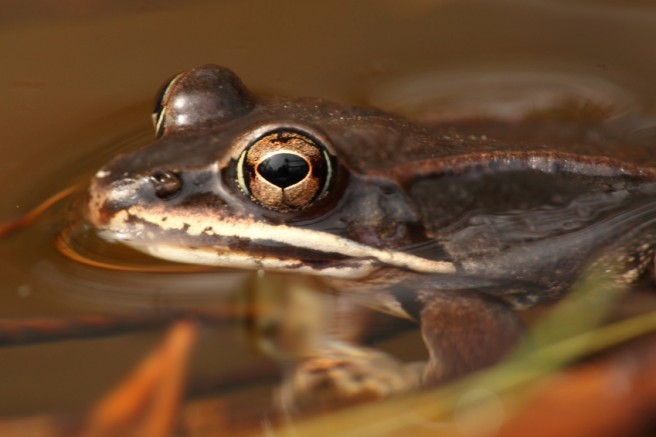A group of researchers tested the effectiveness of eDNA-based ranavirus detection in the field and assessed the relationship between the viral eDNA titers and titers in larval tissues.
Follow our blog ! Subscribe to our RSS fluxIn August 2015, Hall et al. published a paper entitled “Evaluating environmental DNA-based quantification of ranavirus infection in wood frog populations” in the “Molecular Ecology Resources” journal.
Summary: A variety of challenges arise when monitoring wildlife populations for disease. Sampling tissues can be invasive to hosts, and obtaining sufficient sample sizes can be expensive and time consuming, particularly for rare species and when pathogen prevalence is low. Environmental DNA (eDNA)-based detection of pathogens is an alternative approach to surveillance for aquatic communities that circumvents many of these issues. Ranaviruses are emerging pathogens of ectothermic vertebrates linked to die-offs of amphibian populations. Detecting ranavirus infections is critical, but non-lethal methods have the above issues and are prone to false negatives. Here, the authors report on the feasibility and effectiveness of eDNA-based ranavirus detection in the field. They compared ranavirus titers in eDNA samples collected from pond water to titers in wood frog (Lithobates sylvaticus; n=5) tadpoles in sites dominated by this one species (n= 20 pond visits). They also examined whether ranavirus DNA can be detected in eDNA from pond water when infections are present in the pond and if viral titers detected in eDNA samples correlate with the prevalence or intensity of ranavirus infections in tadpoles. With three 250 mL water samples those researchers were able to detect the virus in all visits with infected larvae (0.92 diagnostic sensitivity). Also, they found a strong relationship between the viral eDNA titers and titers in larval tissues. eDNA titers increased prior to observed die-offs and declined afterwards, and were 2 orders of magnitude higher in ponds with a die-off. Those results suggest that eDNA is useful for detecting ranavirus infections in wildlife and aquaculture.
Reference: Hall, E.M., Crespi, E.J., Goldberg, C.S., Brunner, J.L. (2015). Evaluating environmental DNA-based quantification of ranavirus infection in wood frog populations. Molecular Ecology Resources. DOI: 10.1111/1755-0998.12461.


